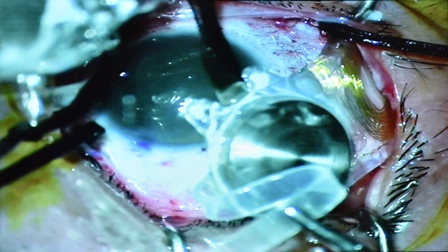The Physicians of Shiraz University of Medical Sciences (SUMS) Have Achieved the World’s Modern Technology: The First Artificial Retina Implantation Surgery in Iran

For the first time in Iran, the physicians of Shiraz University of Medical Sciences (SUMS) have successfully performed artificial retina implantation on two Iranian Women.
The surgery was performed by the Ophthalmology Team of SUMS, under the supervision of Dr. Mohsen Farvardin and in collaboration with Dr. Faisal Rahat, Dr. Adel Attarzadeh, Dr. Morsal Mahriyar, Dr. Hossein Ashraf, Dr. Mehrdad Afarid and Dr. Muhammad Hossein Nowrooz Zadeh at Khalili Hospital.
Considering the vast scope of abilities in Iran, Dr. Farvardin remarked: “Currently, in Iran, we are faced with a great deal of scientific progress in all fields of sciences and especially ophthalmology. As he added, “this operation is the result of a long period of
endeavors which thanks to God, today, is blossoming and we are hopeful to see other scientific mutations in the country.”

This faculty member of SUMS, explaining the methodology of the surgery, mentioned: “This procedure of surgery treatment is used for patients with complete vision loss; for instance, patients with severe night blindness who initially have low vision at night and during time progress and with increasing age will also lose day vision in a way that some are confronted with complete vision loss.”
The surgery was performed in Shiraz on a 40-year-old woman who suffered from complete vision loss of both eyes. Using common methodologies of vision measuring, it is revealed that her eyes are deprived of light perception while utilizing special methods and intense beams of light, optic nerves with electric pulses are exposed. In addition, another woman of 33 years of age sharing similar condition had undergone the same operation and it was for the first time in the world that two surgeries in the mentioned field were operated by a team in one day, he added.
Dr. Farvardin Mentioned that operating this kind of surgery demands a duration of 5 hours while employing the most complicated and modern methodologies of optical operation, he also stated: “The device, placed next to the patient’s eye, is a receptor of the surrounding images recorded by a camera which after being processed are sent to the eye via an antenna. Then, the received images on the surface of the eye, with the help of a wire are transferred to a plate consisting 60 electrodes, which is implanted onto the center of the retina, thus, the stimulation is transmitted to the visual cortex through the optic nerve. Finally, after vision rehabilitation exercises, from a distance of about 1 meter finger counting is done, therefore, with the new condition, the patient is capable of doing plenty of activities, independently.